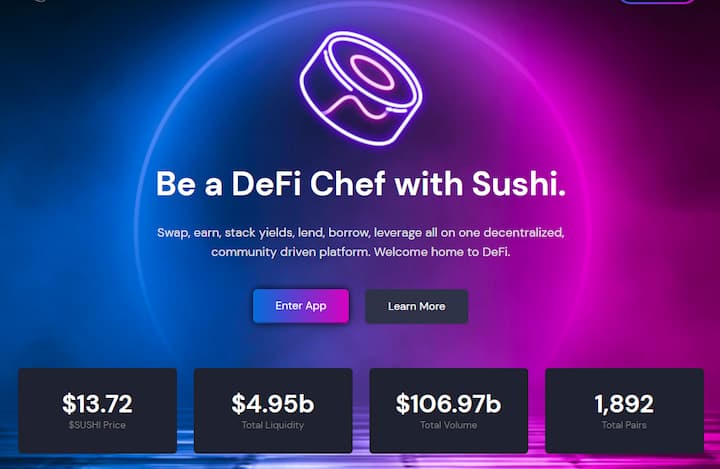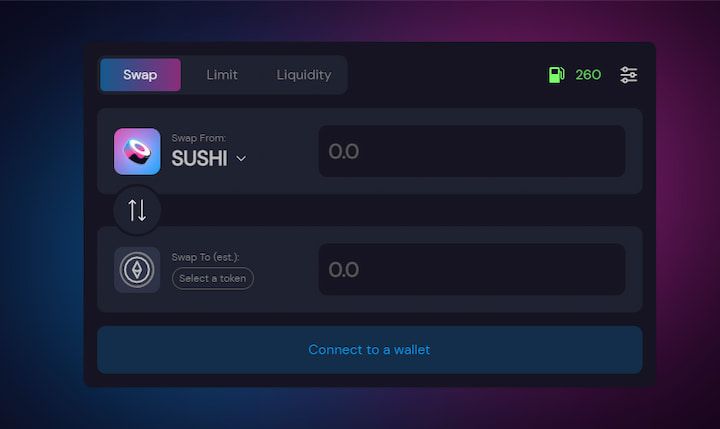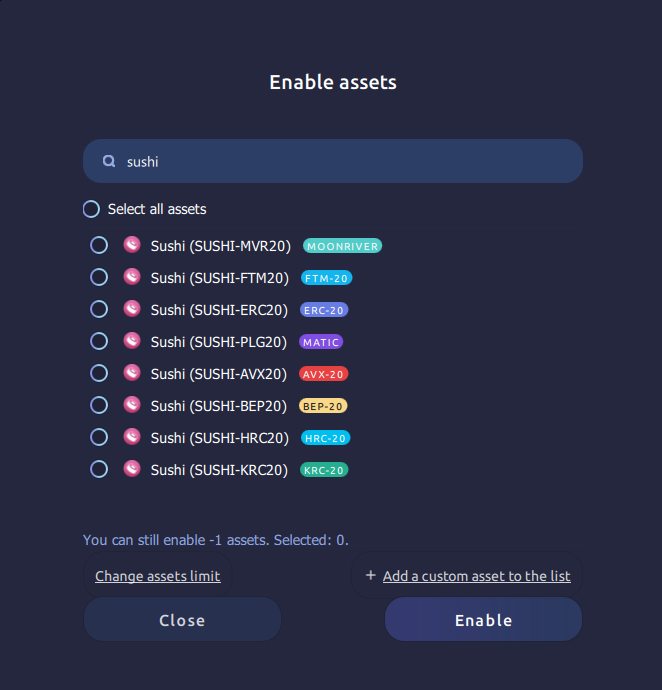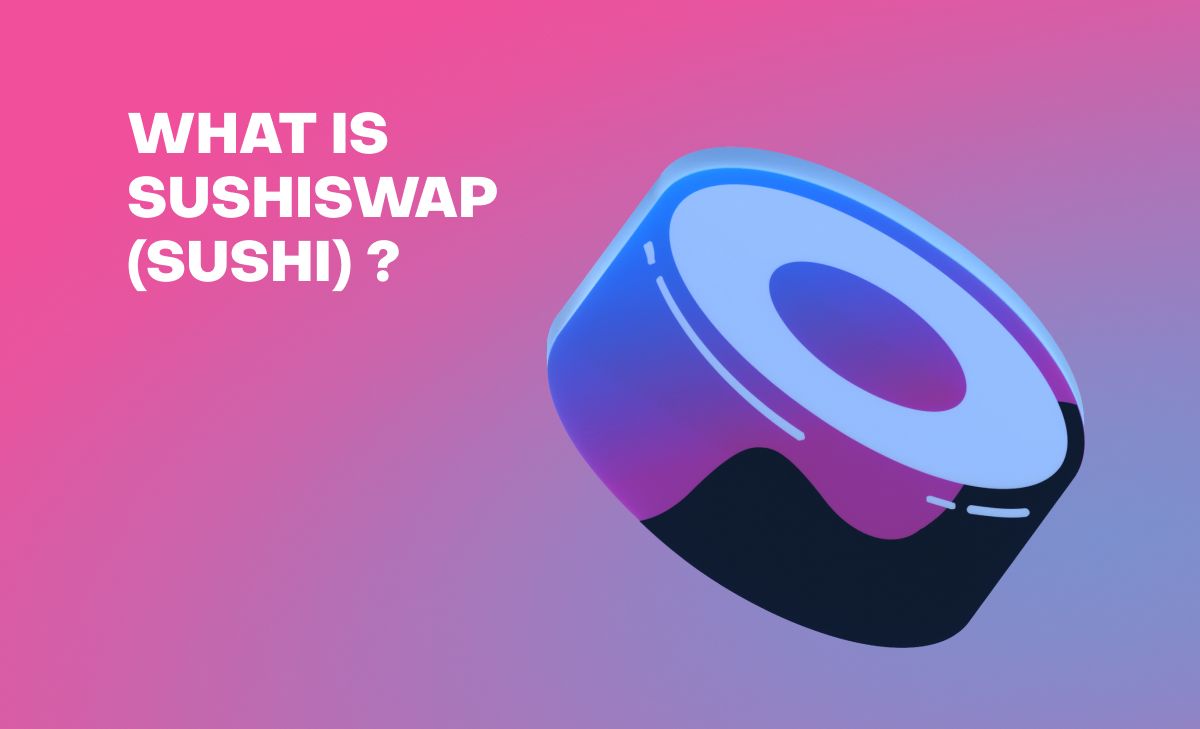This post will break down the SushiSwap crypto exchange, discussing its history, how it works, and how to acquire its native token, SUSHI.
One of the more popular decentralized exchanges out there is SushiSwap. While the project might have had an infamous launch, this sushi-themed crypto exchange has gathered quite a dedicated following.
Decentralized exchanges are open and distributed versions of cryptocurrency exchanges, ones that don't require any form of centralized authority to function. That lack of a central party means that traders and token holders run the platform via governance.
What Is SushiSwap (SUSHI)?
SushiSwap is a decentralized cryptocurrency exchange based on the Ethereum blockchain. Decentralization means it runs a little differently than, say, Coinbase or any other centralized exchange. Instead, SushiSwap runs on liquidity pools with predetermined rules defined by their smart contracts, which remove the need for regulation from a centralized third party.
For example, buying Bitcoin on Coinbase means buying it from the platform's reserves. Buying from SushiSwap is buying via another investor who provided their assets. Essentially, users provide their assets into what's called a liquidity pool made up of two tradable cryptocurrencies, for example ETH/DAI or ETH/SUSHI.
Providers then earn a portion of the trading transaction fees (fees that would traditionally go to third parties), as well as some SUSHI for their participation. Not every liquidity pool will also provide SUSHI, but for some, it is an additional incentive. From there, users can swap one asset for another as they please.

The History of SushiSwap
The Sushi exchange design is based off of the popular Uniswap exchange. An anonymous creator known as Chef Nomi forked (copied) some of the code from Uniswap before allocating liquidity of its SUSHI token to its native liquidity pools. The project gathered that liquidity by giving providers extra rewards for their earnings.
Then, the creators of SushiSwap pulled all of that money from Uniswap, around $840 million, and shifted it to their platform. At this time, the creator ended up selling all of their SUSHI, crashing the price and leading many to assume the project was a rug pull. However, after community backlash, the creator bought back all of their sold SUSHI, and the price returned to its former high. Nomi also donated their funds to the group of SushiSwap developers, showing more long-term commitment. Since then, SushiSwap has been a highly popular decentralized exchange (DEX) among traders and liquidity providers.
Who Founded SushiSwap?
SushiSwap was founded by an anonymous developer who only goes by 'Chef Nomi'. However, after what many saw as an attempted scam by Nomi, they were pushed out of the project by the community. FTX CEO and billionaire Sam Bankman-Fried took over next, transferring ownership over to nine community members and introducing fully decentralizing ownership of the SushiSwap exchange.
How Does SushiSwap Work?
As mentioned, SushiSwap works via liquidity pools made up of various trading pairs. Pools gain liquidity via users providing their cryptocurrency and earning a portion of trading fees for doing so.
Liquidity pools are managed by smart contracts, eliminating the need for a central governing party. Smart contracts are automated if-then statements that hold currencies in escrow until certain criteria are met. In this case, a lender's funds are locked into a smart contract. In an ETH/SUSHI pool, for example, a lender could lock in 100 SUSHI. The smart contract will hold that SUSHI in place until the pool swaps an equivalent value of ETH.
Swapping equivalent amounts of crypto keeps liquidity pools at a constant equilibrium. Of course, providers can pull out of a pool whenever they please, but they can suffer from impermanent loss depending on the dynamics of the trading pair. On top of these features, SushiSwap offers something called The SushiBar, enabling SUSHI holders to stake their tokens and earn interest in the form of xSUSHI.
How Does the SushiSwap Token Work?
When users buy SUSHI, a percentage of trading fees and overall profits are converted into xSUSHI. xSUSHI is then rewarded to liquidity providers as well as users who stake SUSHI. On top of this, every time an Ethereum block is validated, the SushiSwap protocol generates 100 new SUSHI that is also divided up between providers.
SUSHI holders also hold governing power within this ecosystem. Holders can vote on or submit new proposals that would improve the SushiSwap platform. The idea is that those who hold SUSHI want the best for the exchange's future, so they get a say in how that future plays out.

SUSHI Crypto Exchanges and Wallets
SUSHI is listed on a variety of crypto exchanges, including Binance, Coinbase, Huobi, FTX, KuCoin, and SushiSwap. Using a decentralized exchange such as Komodo Wallet, you have an unlimited number of ways to purchase SUSHI, as it supports cross-chain trading via atomic swaps. That said, since SUSHI is an ERC-20 token, all anyone needs is an Ethereum wallet to store their assets. In addition to offering a P2P atomic swap decentralized exchange, Komodo Wallet also serves as a built-in wallet for SUSHI — supporting the token on Ethereum, Polygon, Avalanche, Fantom, Harmony, and other blockchains.
SushiSwap price will vary based on its demand and popularity. Sometimes there are thousands of new users looking to trade on the platform. At other times, the activity might be less prominent, negatively affecting the SUSHI coin price.

How to Make Your First Trade on SushiSwap
Once an Ethereum wallet is connected to the SushiSwap platform, one simply needs to navigate to the Swap tab. Then, they should choose a liquidity pool of their choice, input the amount of tokens they'd like to swap, and hit the Swap button. This process is all that's required to make your first trade on SushiSwap.
The Future of SushiSwap
What's interesting about decentralized exchanges is that there are many competitors to SushiSwap and many of them provide their own unique benefits and native token like PancakeSwap (CAKE). Some competitors are on different blockchain networks as well, serving an entirely different audience that might not need to use SushiSwap.
As of this writing, SushiSwap is one of the most popular decentralized exchanges out there. But, as other exchanges continue to develop their own features, SushiSwap's placement is bound to change. That said, SushiSwap isn't planning to sit contently by and become dethroned. The platform is already working on new technology and protocols to speed up transactions and lower fees, among other features. Of course, we'll have to see if SushiSwap can become more accessible to the average trader as well.

